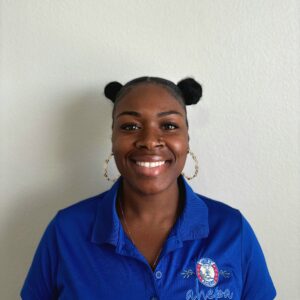Heading Off Legal Claims-Before They Happen
| Heading off legal claims-Before they happen Adverse incidents don’t have to lead to lawsuits if there’s a plan in place for responding to them BY MARDY CHIZEK, RN, FNP, BSN, MBA, AAS, CLNC |
| The best way to prevent negative incidents and poor outcomes in long-term care facilities is, of course, to provide high-quality care. But in an imperfect world, under circumstances that sometimes can be less than optimal, such occurrences are bound to arise. How can they be handled so that your facility isn’t faced with a costly, reputation-damaging lawsuit? Carefully listening to residents, communicating with residents and their families, and actively intervening to prevent or resolve problems can go a long way toward maintaining customer satisfaction in long-term care facilities. If, however, your staff are too busy to report negative incidents, if they are unaware of signs that could forewarn them of an impending problem, or if they fear the repercussions of reporting anything negative, residents and their families might end up feeling that no one in your facility cares. Once they have that perception, their next step might be to seek legal counsel, and before you know it, you’re facing a lawsuit. Three basic steps are involved in risk management as it pertains to avoiding legal claims: identification, investigation, and intervention. These steps are discussed below. Identification Investigation For maximum protection of the quality assurance information, skilled nursing facilities should “maintain a ‘privilege log’ of quality assurance documents in order to aid the court in its assessment of whether the quality documents are protected….”1 This guidance comes from a New York State Court of Appeals case (Subpoena Duces Tecum v. Jane Doe), in which the court unanimously ruled that the attorney general’s Medicaid Fraud Control Unit “could not obtain [quality assurance] documents…with a subpoena because the reports were solely generated for quality assurance purposes and are not mandated by statute or regulation.”1 [Disclaimer: Before implementing privilege logs, consult with legal counsel to ensure that they comply with all relevant statutes.] Because the protection of any actionable information gathered during an investigation of a PCE is paramount to the investigation, organizations should always check with legal counsel before establishing anysystem. Keep in mind that each jurisdiction is different, so tailoring the process to the locale is mandatory. Two approaches can be taken. One option is for defense counsel to request and direct the Risk Management Subcommittee’s investigation. (This should not be the attorney who serves as the organization’s corporate counsel; rather it should be an attorney with expertise in this area). The other option is for the organization’s liability insurance company’s legal counsel or claims representatives to direct the investigation. The organization’s board of directors or owners should have an active role in the oversight of all quality and potential claim information generated by a facility or facilities. These bodies have fi duciary responsibility for the quality of services delivered by their organization. Although they don’t directly provide those services, they are nevertheless responsible and should be kept informed. Two-way communication of peer review (quality assurance activity) and risk management activity between the board/owners must be demonstrated through documentation. This establishes the formality of the system and supports the protection of quality assurance documents and highlights the fact that they are bona fide quality materials. Regardless of who is involved in the investigation, investigators must place themselves in the mind-set of the resident and family, which will require objectivity. Because it is difficult to be objective when one is feeling personally or professionally attacked by a resident, it might be beneficial, if not essential, to have an external resource review the facility’s documentation, systems, and processes during the investigation. Resources that might be tapped are professional risk managers from your liability carrier, state peer-review resources, or independent consultants. If employee statements are required as part of the investigative process, it is best to interview employees and record their responses for them, rather than allowing them to write their own statements. If an incident does come to litigation, employee statements will have to be defended as written, which is frequently problematic. For example, if an employee writes, “I was walking down the hall and heard someone verbally abusing a resident,” the plaintiff has a head start on an abuse allegation. If, however, the investigator asks the employee what he or she heard and records the response as, “I was walking down the hall, entered a room, and heard a voice that I could not identify speaking loudly to someone in the adjacent room,” the staff member’s observation won’t automatically implicate the facility or staff in any wrongdoing. After the investigator directs the questioning and documents the employee’s response, he or she should then have the employee read, sign, and date the documentation. Intervention The following is a scenario demonstrating appropriate and adequate communication with a family. A resident has fallen and experienced a fracture. The family states that they are not happy because the resident was not restrained. The response might be:
I understand that you are concerned about restraints. Years ago it was customary to use restraints in nursing homes, but research and experience have demonstrated that restraints are more harmful than helpful in the elderly. We use a variety of options in our facility and have used X, Y, and Z with your mother. Our goal is to keep our residents as mobile and active as possible, and restraints lead to more rapid deterioration and falls that result in a greater rather than a lesser injury. Again, I am sorry about the occurrence that led to your mother’s hospitalization/surgery. Please know that you are in our thoughts, and please let us know if there’s anything we can do to help you. Residents and families want to hear that the administration and staff are sorry for any inconvenience they might have experienced because of the organization. A simple “I am sorry” lets residents/families know you care, and it is not an admission of “guilt.” It is also important during the intervention to carefully choose the person who will communicate with the family after a problem has occurred or if trouble appears to be brewing. The facility representative must have excellent listening skills, be empathetic, be trusted and respected by the family, and must not be defensive. This person must also make him/herself available at the family’s convenience, and not vice versa. The best candidate to serve as this key communicator might not be the DON or administrator. Any person who has the skills and a formal or informal leadership role is appropriate. Another aspect of intervention that shouldn’t be overlooked is critical evaluation of the facility’s organizational systems and processes, for the purpose of identifying opportunities for improvement. Most adverse occurrences happen not because of an incompetent employee, but because the system is flawed, so processes must be in place to continuously monitor the operation and make needed improvements. In summary, the nursing facility must have a formal process for identifying PCEs. Once an adverse occurrence (i.e., a PCE) has been identified, the real work begins. An in-depth, objective investigation must be carried out immediately, under the direction of legal counsel or the facility’s insurance company, if possible. The resident and his or her family must be included in this process early on. Open communication channels must be established and maintained throughout the process, and updates should be provided to them frequently. When the cause of a negative incident has been identified, system-wide changes must be implemented to prevent such an event from happening again. These measures must be part of the peer review/quality improvement processes and documented as such. Certainly, the best method of preventing claims and poor outcomes is to constantly monitor the system in this way and provide improvements in a timely fashion. |
Table. Examples of Potentially Compensable Events (PCEs) Frequently Cited as Claim Allegations
|
| Mardy Chizek, RN, FNP, BSN, MBA, AAS, CLNC, is President of Chizek Consulting, Inc., Westmont, Illinois. For more information, phone (630) 515-9223. To comment on this article, please send e-mail to chizek0304@nursinghomesmagazine.com. For reprints, call (866) 377-6454. Reference |
I Advance Senior Care is the industry-leading source for practical, in-depth, business-building, and resident care information for owners, executives, administrators, and directors of nursing at assisted living communities, skilled nursing facilities, post-acute facilities, and continuing care retirement communities. The I Advance Senior Care editorial team and industry experts provide market analysis, strategic direction, policy commentary, clinical best-practices, business management, and technology breakthroughs.
I Advance Senior Care is part of the Institute for the Advancement of Senior Care and published by Plain-English Health Care.
Related Articles
Topics: Articles , Facility management , Risk Management











